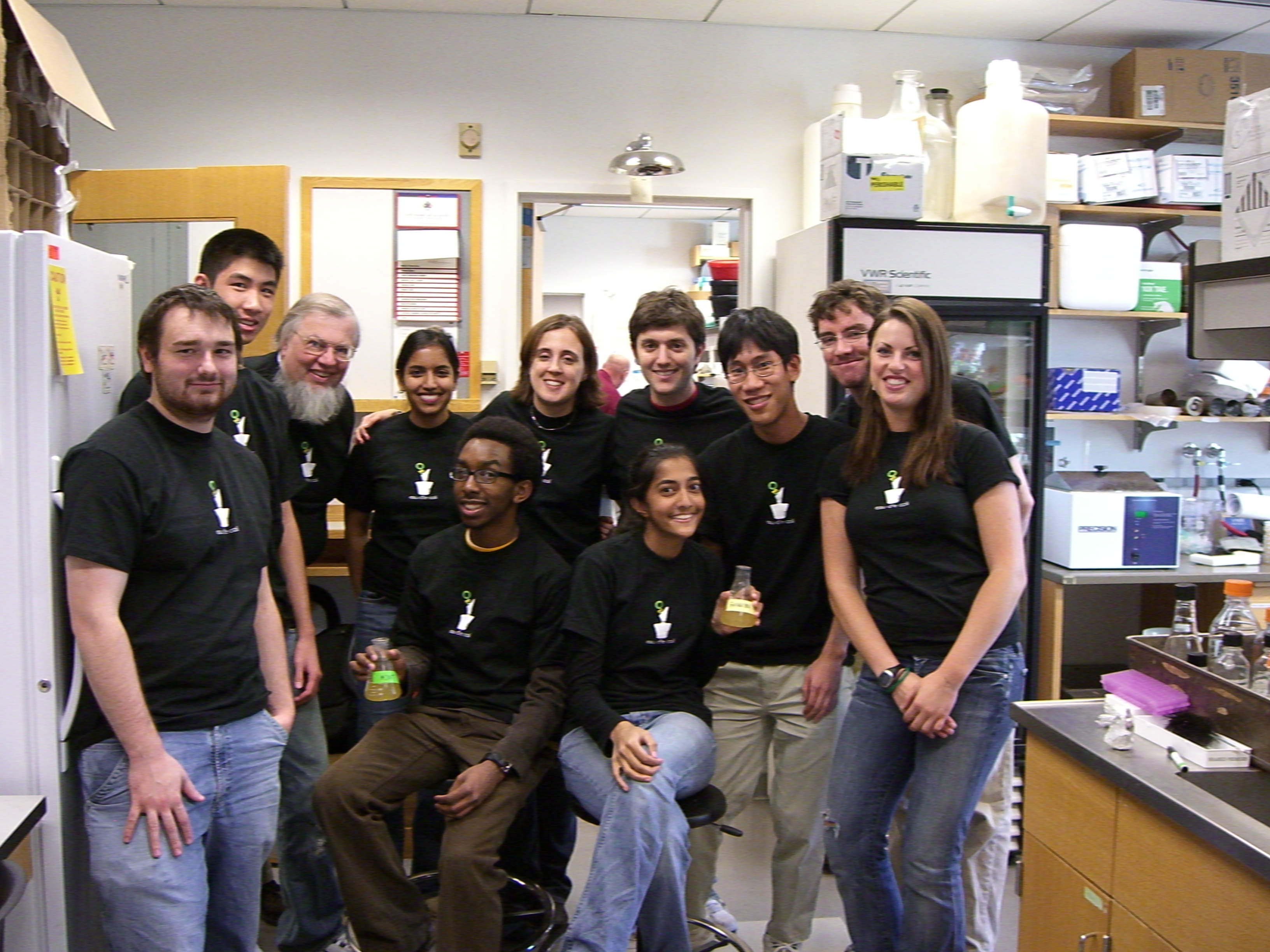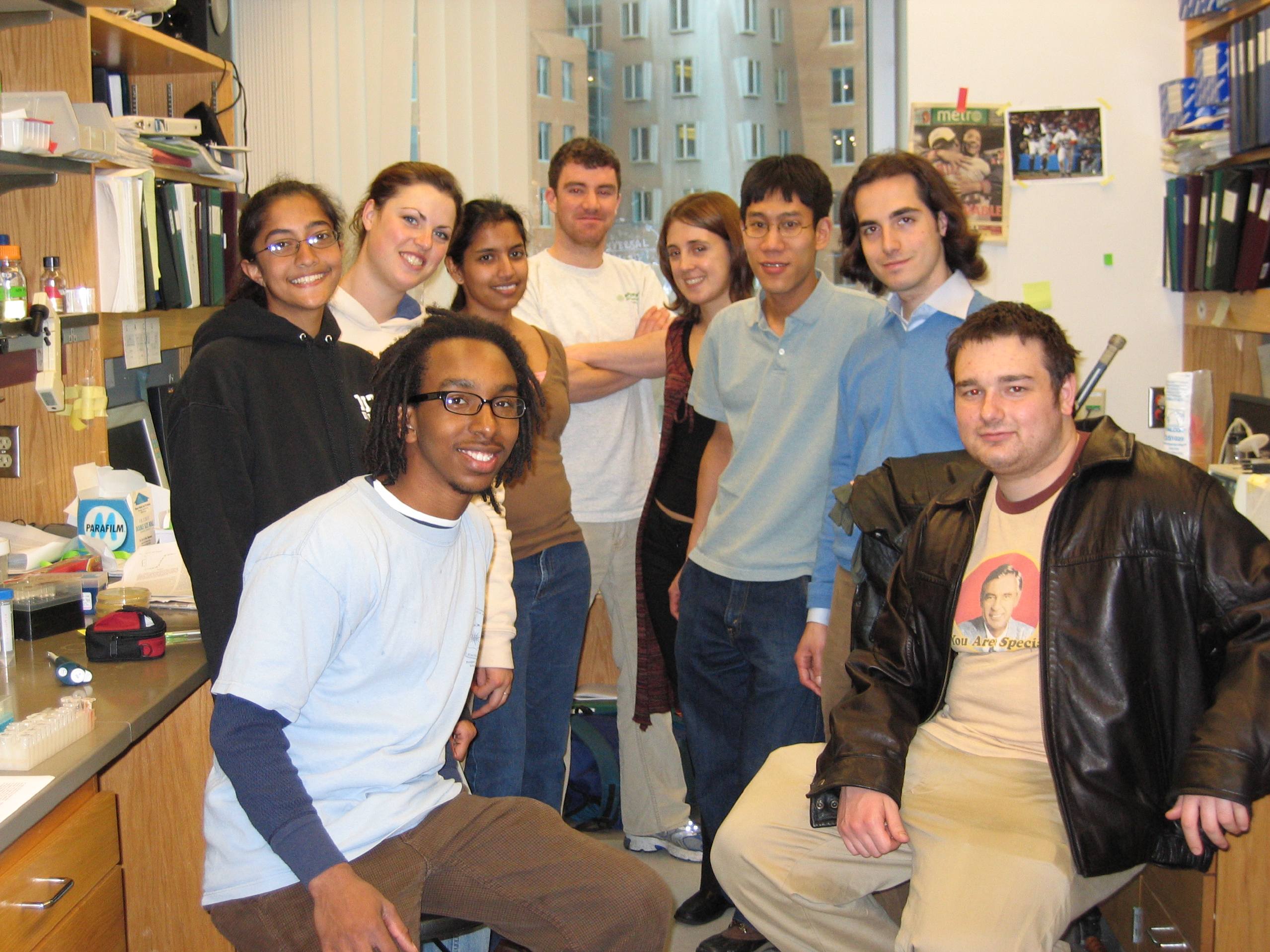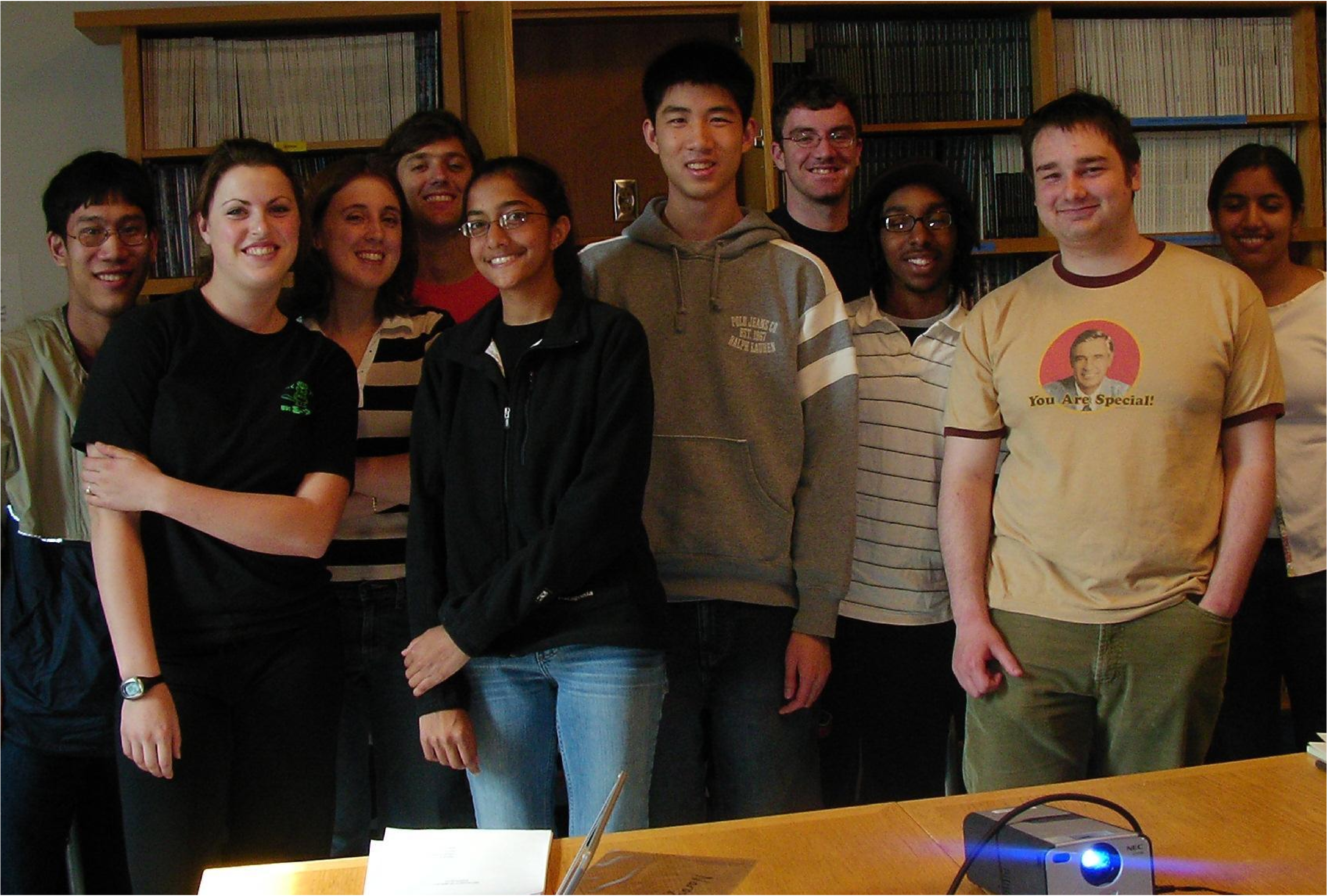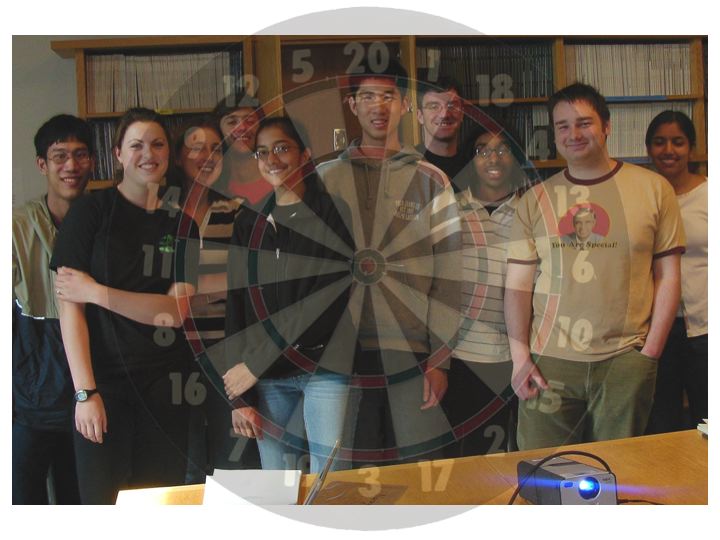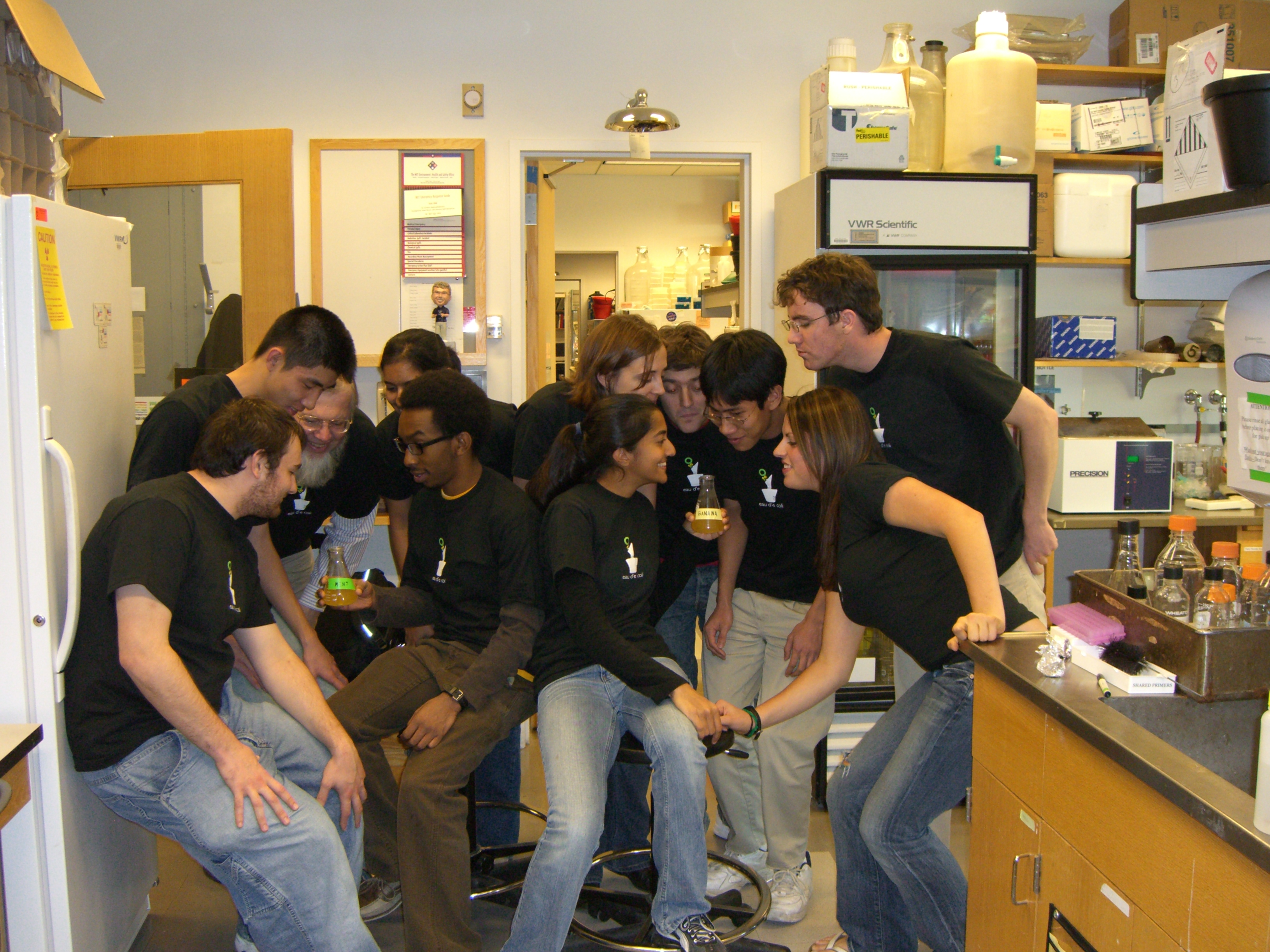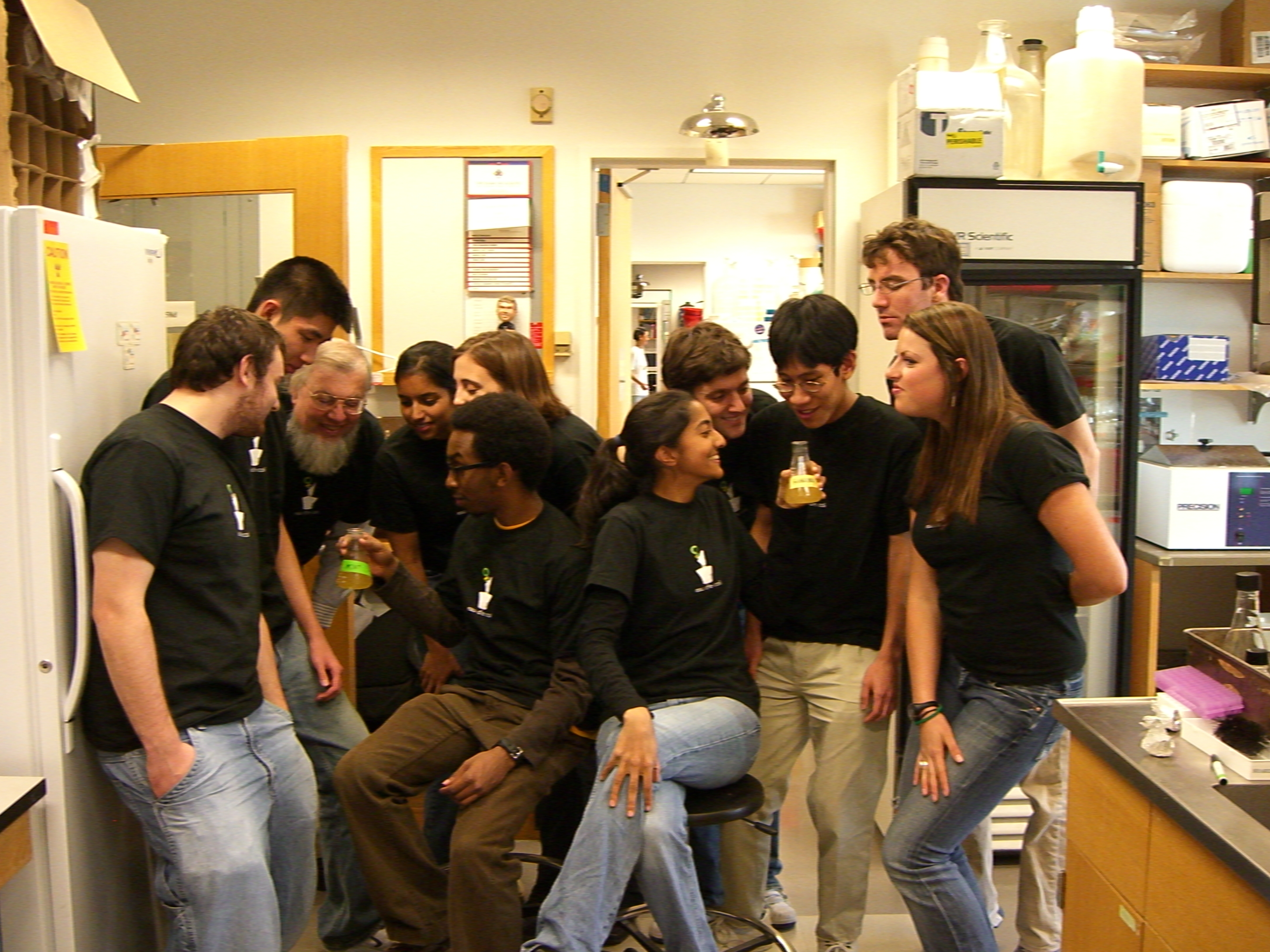MIT 2006
From 2006.igem.org
See our wiki at MIT iGEM 2006 at OpenWetWare. (Far more information available there!)
Contents |
Members
The MIT iGEM team consists of 5 students working fulltime during summer 2006 on engineering a biological system. In addition, we have 5 graduate student advisors and 2 faculty advisors.
Students
Email us: team AT igem.mit.edu
Advisors
Email us: igem AT igem.mit.edu
Project description
This summer, MIT's iGEM 2006 team is developing bacteria that smell pleasant. We have inserted several genes into bacterial genomes to make the cells produce a wintergreen and/or a banana scent. Scents can act as natural biological tags and have many extended applications. By attaching the scent tag to a case-sensitive promoter, we engineered a cellular system to report on environmental conditions. Also, since E. coli naturally produce a fecal smelling compound, we feel that our system will be useful to scientists worldwide as it will make lab work with E. coli bacteria a little less painful. Other bacteria are responsible for producing human odor problems in the mouth, armpits, and feet. By implementing our system in these foul smelling bacteria, we could potentially develop bacterial deoderant. In addition, we could implement our system in yeast, thereby producing new flavors and scents in bread and beer. Perfuming bacterial biofilters are yet another feasible industrial application of our project.
Motivations
Our project focused on engineering Escherichia coli to produce different compounds that smell fragrant. Since scents can both act as natural reporters and have a diverse array of applications, they represent a promising but thus far unexplored area of synthetic biology.
Future applications of this work that we envision include ...
- Improving the workplace environment for microbiologists working with Escherichia coli since E. coli produce a natural foul scent.
- Porting our system to bacterial species involved in bioremediation.
- Implementing our system in bacteria responsible for bad human odor in the mouth, armpits and feet.
Contributions
Devices
- A biosynthetic device that converts salicylic acid to methyl salicylate (or wintergreen).
- A biosynthetic device that converts isoamyl alcohol to isoamyl acetate (or banana smell).
- A PoPS source that is only active during stationary phase.
- A PoPS source that is only active during exponential phase.
Systems
- Escherichia coli capable of producing a wintergreen scent autonomously (without addition of any precursors).
- E. coli capable of producing a banana scent autonomously (without addition of any precursors).
Future work
coming soon ...
